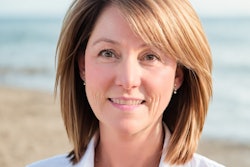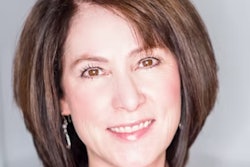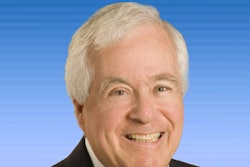
When selling a dental practice, many dentists mistakenly believe their practice is worth more due to its "potential.” Working in this field as a dental practice consultant and broker for more than 30 years, I've encountered numerous sellers who think their practices should have higher valuations due to factors like unused office space, availability to increase hours, anticipated community growth, or bringing more procedures in-house.
Some unscrupulous brokers will overvalue practices by focusing on this potential, leading to inflated expectations and fewer, if any, offers at the end of the day. In reality, a practice's potential carries little weight -- what really matters is how it's currently performing. Credible brokers will base valuations on hard data like cash flow and operational efficiency so you receive an accurate valuation that attracts more serious buyers and offers.
Misconceptions about valuations
It's a misconception I hear frequently: Dentists believe their practice is worth more than it is because they're focused on what it could be rather than what it is. Maybe the practice has room for more operatories or new homes are being built nearby, which might equate to more new patients. However, buyers, and more importantly, banks, aren't interested in the potential. They're looking at hard data: the actual performance of the practice today.
In practice transitions, the current operational efficiency, patient flow, and profitability are what determine value. Financial institutions lending money to prospective buyers don't base their calculations on what the practice might achieve in the future. Lenders focus on cash flow and tangible assets because this helps them determine how much they'll lend, and speculation doesn't figure into that equation.
Why valuing potential is risky
Valuing a practice based on potential is a dangerous game. Some brokers -- those less experienced or acting in bad faith -- may overvalue a practice by emphasizing its speculative future. While this might sound appealing to sellers, it leads to complications. For instance, DSOs (dental service organizations) are smart buyers who are often backed by private equity groups, and they understand the risks of paying more than a practice is currently worth. If your practice is overvalued, it can also impact the offers you receive from individual buyers, because banks will not approve loans for individual buyers based on inflated numbers.
Potential growth is speculative, and any serious buyer is looking to minimize risk, not take on more of it. Buyers and lenders alike pay for proven performance, not uncertain future projections. A practice that isn't maximizing operational efficiency cannot promise future growth regardless of how much room it has to expand or how many more patients it could theoretically attract.
SDE vs. EBITDA: The valuation essentials
To understand how dental practices are valued, it's important to differentiate between two key financial metrics: the seller's discretionary earnings (SDE) and earnings before interest, taxes, depreciation, and amortization (EBITDA). This distinction is critical because I often see financial experts confuse the two, leading to inaccurate valuations.
- EBITDA measures a practice's profitability by excluding the owner's discretionary costs, making it the preferred metric for DSOs, who focus on growth opportunities and maximizing profit postsale.
- SDE, on the other hand, reflects the owner's salary, net income, and personal expenses paid by the practice and is used for individual buyers, as banks rely on it to assess loan eligibility.
The key takeaway: DSOs prioritize EBITDA to project future profits under new management, while individual buyers focus on SDE to determine what they'll earn. Understanding this distinction can ensure your practice is valued accurately based on the type of buyer you're targeting.
Alternatively, inexperienced or unqualified brokers -- and even some certified public accountants -- may use a more simplistic method by applying a flat percentage to the practice's collections for valuation. This approach overlooks crucial details like SDE and EBITDA, creating a misleading valuation that doesn't accurately reflect the practice's worth. Such methods not only misrepresent the practice's financial health but also result in unrealistic expectations and potential complications in the sale process.
Avoid brokers who apply a flat percentage without examining the full financial picture, as this method is fundamentally flawed and can harm your ability to achieve a fair and accurate valuation.
What actually goes into a practice valuation?
A practice's value is rooted in real-time factors, not future possibilities. Here are some of the key aspects that go into an accurate valuation:
- EBITDA or SDE, depending on whether the buyer is an individual or a group
- Practice location: Urban practices tend to sell more easily than rural ones due to factors like a larger population
- Type of dentistry and revenue sources: General dentistry, cosmetic services, and specialties each have different values
- Patient attraction and retention rates: These numbers show the practice's current ability to generate income
- Condition of the practice's dental equipment: While equipment condition is considered, the key factor is the practice's revenue generation, not recent upgrades. Consistent equipment updates over time are more optimal than last-minute purchases before a sale
- Long-term revenue trends: A history of strong and consistent revenue signals a stable, valuable practice.
Repainting the office or purchasing the latest equipment doesn't significantly change these numbers. What matters most is collections, because that is the true backbone of a practice's value.
The DSO factor
Once you get to the offer and negotiation phase, the game changes. DSOs factor potential growth into their offers, applying a multiple to the EBITDA. Beyond this, some DSO deals incorporate incentives tied to future growth, such as earnups or joint venture models.
In a joint venture model, the seller retains partial ownership postsale, benefiting from the practice's continued success with the support of the DSO. In an earnup, the seller receives additional compensation if the practice meets or exceeds certain financial targets postsale, allowing the seller to capitalize on the practice's growth after the transition. This is where "potential" can come into play, but it's during the offer evaluation and negotiation stage, not the initial valuation.
Maximizing value without slowing down
A common mistake dentists make after getting their practice valued is slowing the production or marketing of their practice. This can drastically affect the final sale price, as reduced production leading up to the sale can lower the practice's value, requiring recalculation. Sellers should stay focused on maintaining strong operations and performance throughout the transition process so they achieve the best possible financial outcome.
Preparing for your practice's sale
If you're considering selling your practice, it's essential to prepare now. Don't wait until you're in the middle of negotiations to realize that your practice isn't worth as much as you need to meet your financial goals.
Start by getting a prospectus and understanding what your financial exit might look like. Knowing your numbers ahead of time empowers you to make informed decisions when the offers come in. It's always better to be prepared than to be surprised later in the process.
Beware of brokers who promise inflated valuations based on speculative potential rather than your practice's current performance. These bad actors can lead to unrealistic expectations and ultimately hinder your sale. Work with a knowledgeable dental practice broker who provides a realistic, data-driven valuation based on your practice's actual performance. The right broker can help you steer clear of a bad valuation that undermines the true value of the business you've worked so hard to build.
Kim McCleskey is a practice transition consultant with Professional Transition Strategies. She has worked in dentistry for more than 30 years and is a certified professional business coach. She can be reached at [email protected].
The comments and observations expressed herein do not necessarily reflect the opinions of DrBicuspid.com, nor should they be construed as an endorsement or admonishment of any particular idea, vendor, or organization.



















